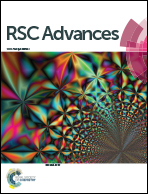Strategies for formulation development of andrographolide
Abstract
Andrographolide (AN), a diterpenoid lactone, is one of the prime phytoconstituents of Andrographis paniculata. AN possesses various therapeutic benefits such as hepatoprotective, analgesic, anti-inflammatory, anti-tumor, anti-hyperglycemic, anti-oxidant activities. However, AN has not reached its milestone therapeutic potential as clinical studies have suggested that a conventional dosage form of AN showed low oral bioavailability (2.67%). The factors attributed to low bioavailability included specific site absorption, hydrolysis in weak alkaline environments, first pass metabolism, P-gp excretion in the terminal intestine, biliary excretion and poor aqueous solubility (3.29 μg mL−1). A successful AN therapy warrants an apt delivery system that will enhance its bioavailability. Current approaches for developing an improved delivery system for AN are mainly focused on overcoming solubility and toxicity issues. The path to identify new molecules with better therapeutic efficacy will continue to be an integral part of health care systems but here the authors have emphasized on ‘better delivery of drugs’, which is going to further refine therapy. The different formulation approaches investigated so far have shown much promise experimentally in improving the bioavailability of AN. However, a product for human use is still far away. Since its isolation and characterisation in 1911 several developments related to AN have occurred. This review is the first comprehensive account of the pharmaceutical aspects of AN with special emphasis on its delivery that have occurred over the last century.


 Please wait while we load your content...
Please wait while we load your content...